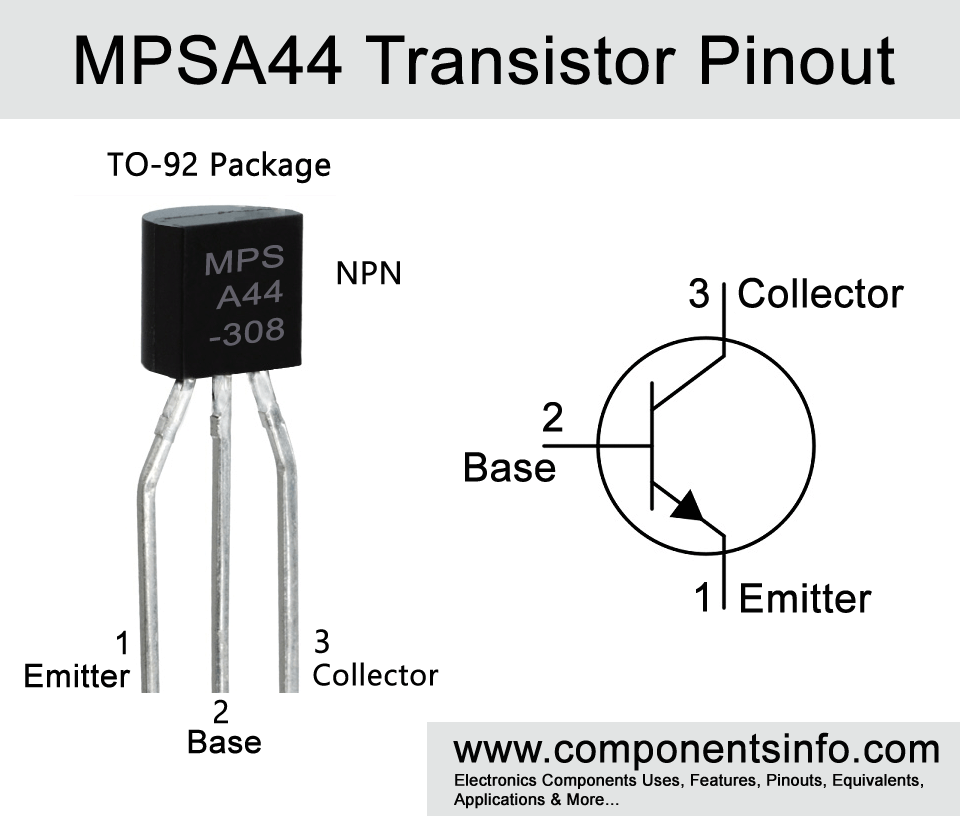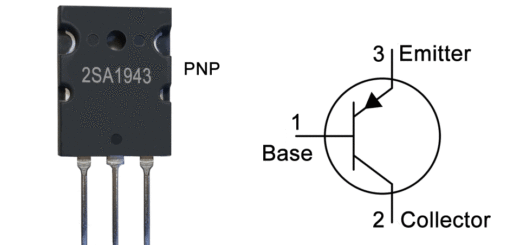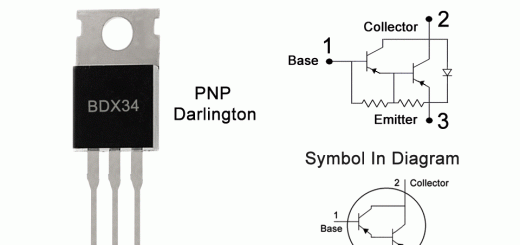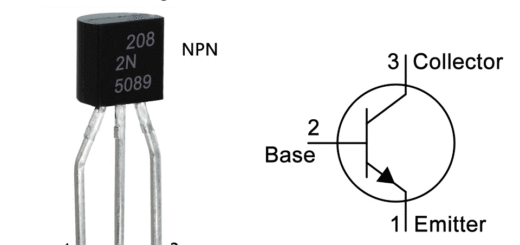MPSA44 Transistor Pinout, Equivalents, Features, Applications and Other Important Details
If you are looking for a high voltage BJT transistor in small TO-92 package with up to 300mA of collector current then MPSA44 might be a good choice. In this post, we are going to discuss MPSA44 transistor pinout, equivalents, features, applications, and other important details about this transistor.
Absolute Maximum Ratings:
- Package Type: TO-92
- Transistor Type: NPN Silicon
- Max Collector Current(IC): 300mA
- Max Collector-Emitter Voltage (VCEO): 400V
- Max Collector-Base Voltage (VCBO): 500V
- Max Emitter-Base Voltage (VEBO): 6V
- Total Device Dissipation (Pc): 625mW
- Minimum & Maximum DC Current Gain (hFE): 40 To 200
- Max Storage & Operating temperature: -65 to +150 Centigrade
PNP Complementary:
PNP Complementary of MPSA44 is MPSA94
Replacement and Equivalent:
KSP44BU, KSP44TF, KSP44
MPSA44 Transistor Explained / Description:
MPSA44 is a silicon BJT transistor available in TO-92 package. It is a high voltage transistor and capable of driving a load of up to 400V with a max current capability of 300mA. The transistor is designed to be used in telecommunication and high voltage switching applications. Looking at the absolute maximum ratings of the transistor the maximum collector-emitter voltage is 400V max collector-base voltage is 500V, max continuous collector current is 300mA, max emitter-base voltage is 6.0V, total device dissipation is 625mW and operating and storage junction temperature is from -55°C to +150°C.
Thermal Characteristics:
The thermal characteristics of a transistor shows how efficiently the transistor is capable of managing its heat. The Thermal Resistance, Junction to Case of the transistor is 83.3 °C /W, which shows the efficiency of its heat dissipation through its casing.
Electrical Characteristics:
The electrical performance of the transistor is divided into on and off characteristics. In off condition the transistor also has protective measures like (V(BR)CEO) or collector to emitter breakdown voltage of 400V which protects it from voltage spikes. Moreover, the (ICBO) or collector cut-off current of 0.1uAdc blocks the flow of unwanted current in the off state.
In the other condition when the transistor is in an ON state it provides the DC current gain of 40 to 200. Moreover, the (VCE(sat)) or collector-emitter saturation voltage of 0.4V at 1.0mAdc shows its ability of current control.
Where We Can Use it & How to Use:
The transistor is specially designed for high voltage applications, moreover, it can also be used in switching applications, amplifier applications etc. The using or operating procedure of this transistor is the same as we use any other BJT transistor, the emitter will be connected with the negative supply of the circuit, collector will be connected with the load and base will be connected to the signal output of the circuit or the signal you want to amplify or on which you want to switch the transistor.
Applications:
Low Voltage Switching
Signal Amplification
High Voltage Switching
Audio Amplification
High Voltage Relay Driving
Sensor Circuits
Driving Loads under 0.3A
How to Safely Long Run in a Circuit:
Proper usage of the transistor is always important for good and stable long term performance. For doing so it is important to follow these safe operating guidelines to wisely operate the transistor in your application.
First of all it is very important that the transistor should not be used to its absolute maximum ratings and it should be used at least 20% below from these ratings. So the maximum collector to emitter voltage is 400V but we will not drive load of more than 320V. The maximum collector current is 300mA therefore do not drive load of more than 240mA. Additionally, the storage and operating temperature of the transistor should be between -55 °C to +150°C.
Datasheet:
To download the datasheet just copy and paste the below link in your browser.
https://z3d9b7u8.stackpathcdn.com/pdf-down/M/P/S/MPSA44-ONSemiconductor.pdf



